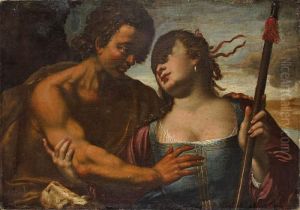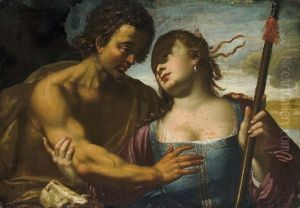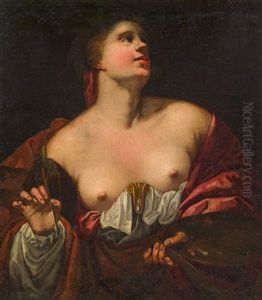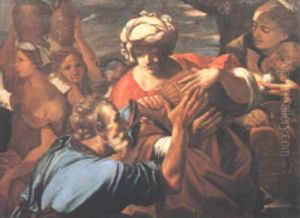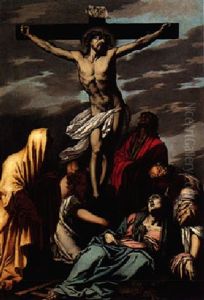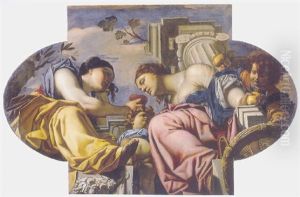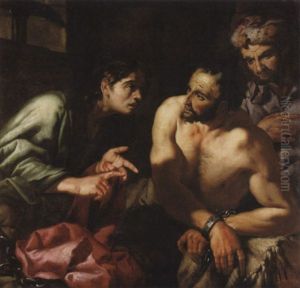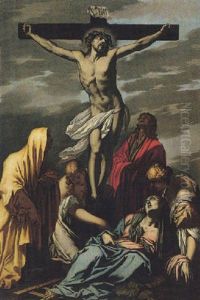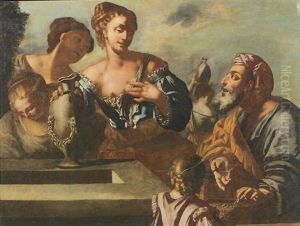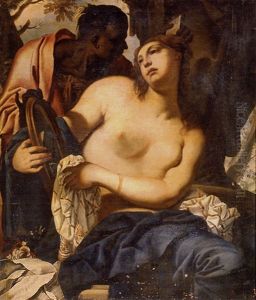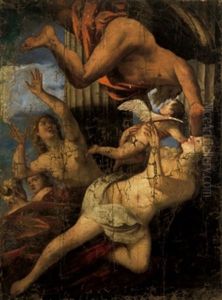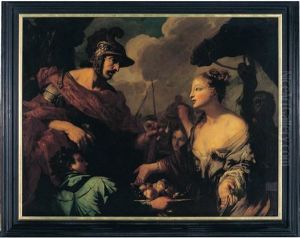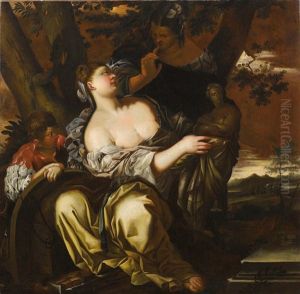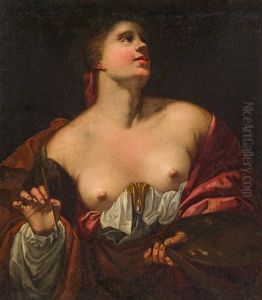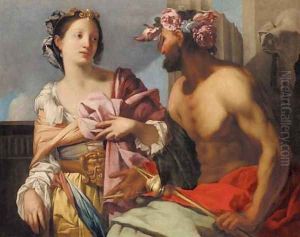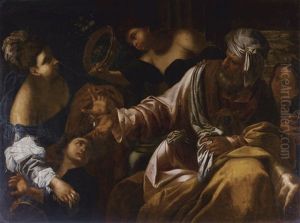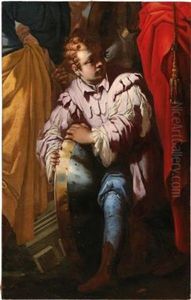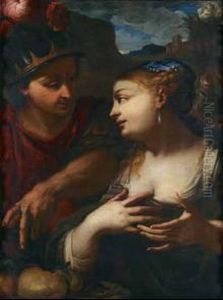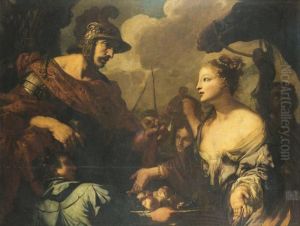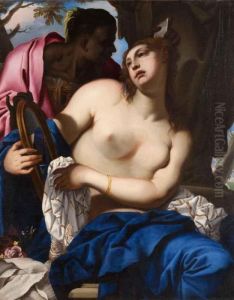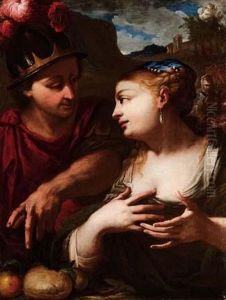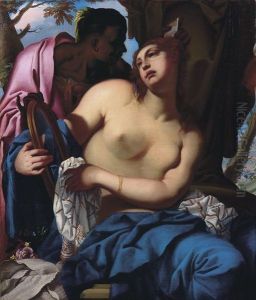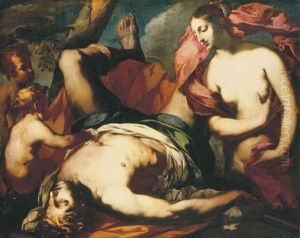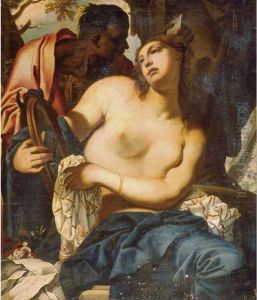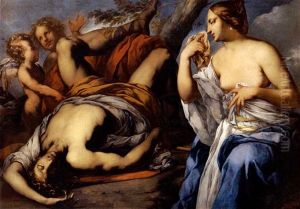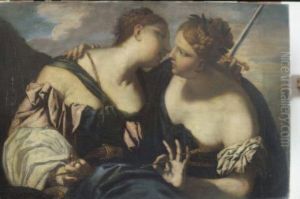Francesco Ruschi Paintings
Francesco Ruschi, also known as Francesco Rusca or il Salvolini, was an Italian painter of the Baroque period, born in 1610 in Tuscany. He is not to be confused with the Swiss-Italian portraitist Francesco Rusca, who was active around the same time. Ruschi was primarily known for his religious works and was influenced by the dramatic style of Caravaggio, as well as by the work of other prominent Baroque artists.
Ruschi's early years remain somewhat obscure, but it is believed that he received his artistic training in Rome, which was a major center for artists during the 17th century. His works reflect the Baroque fascination with theatricality, use of chiaroscuro, and dynamic compositions. Ruschi's paintings often depicted scenes from the New Testament and the lives of the saints, imbued with a sense of emotion and movement that was typical of the period.
Throughout his career, Ruschi worked for various churches and patrons in Rome and across Italy. His altar pieces and frescoes can be found in several churches, showcasing his ability to work on a grand scale. His style evolved over the years, incorporating elements from other artists and developing a distinctive approach to religious narrative.
Despite his contributions to Baroque art, Francesco Ruschi did not gain the same level of fame as some of his contemporaries. As a result, his works have been occasionally overlooked in art historical discourse, and specific details about his life and career are not as well-documented as those of more renowned artists from his time.
Ruschi's date of death is not precisely known, but it is believed that he died around 1681. His paintings remain as a testament to the Baroque style and continue to be studied for their artistic and historical significance. While the full scope of his oeuvre is not completely cataloged, Ruschi's existing works contribute to our understanding of the diversity and richness of 17th-century Italian art.
